Infrastructure/Climate Change Risk Management
Taxonomy Term List
Readiness for the National Adaptation Plan Process in Argentina
The project supported the Government of Argentina in establishing its adaptation planning process. This involved identifying gaps, capacity building, and integrating climate change considerations across national, regional, and local levels. By doing so, the project facilitated the assessment and reduction of vulnerability to the adverse effects of climate change by integrating climate change adaptation into the country's development strategies.
The scope of the project included the preparation of the National Adaptation Plan (NAP) with a regional and multi-sectoral approach. Additionally, it involved the development of a system to monitor and assess adaptation needs and measures under the Law 27250 Minimum Standards for Adaptation and Mitigation to Climate Change (Ley de Presupuestos Mínimos de Adaptación y Mitigación al Cambio Climático). To achieve the proposed outcomes, the project developed a communication strategy on climate change adaptation, carried out a series of studies to identify adaptation options, and supported inter-sectoral and inter-jurisdictional collaboration within the framework of the National Cabinet on Climate Change (NCCC), the Federal Environment Council (COFEMA), and the National System for Comprehensive Risk Management (SINAGIR).
In recent years, Argentina has made decisive progress in planning and implementing measures to adapt to climate change. The National Communications on Climate Change have made valuable contributions, such as providing information, conducting diagnoses, and identifying various information gaps. Within the framework of the National Climate Change Cabinet (NCCC) work, several sectoral initiatives that are directly or indirectly related to climate change adaptation were identified, as well as other information and capacity needs.
This project, funded by the Green Climate Fund (GCF) NAP Readiness Programme, aimed to deepen this work by supporting National Adaptation Plan (NAP) development. This involved facilitating the evaluation and reduction of vulnerability to the adverse effects of climate change by integrating climate change adaptation into Argentina’s development strategies.
The “Readiness for the National Adaptation Plan Process” project was launched in March 2019 to support Argentina’s efforts to assess and reduce climate change vulnerability by integrating climate change adaptation into the country's sustainable development. To achieve this goal, the project aimed to build adaptive capacity and resilience. It sought to integrate climate change adaptation into both new and existing policies, programmes, activities, and development planning processes and strategies across relevant sectors at different levels.
In particular, the project supported the Government of Argentina to:
1) Establish a national process to coordinate adaptation planning at all relevant scales with a medium and long-term perspective.
2) Identify capacity gaps and strengthen capacities for adaptation planning and implementation, integrating adaptation to climate change into national, provincial, and municipal development planning processes.
3) Support the preparation of the NAP with a regional and multi-sectoral approach in the framework of the National Climate Change Cabinet.
4) Establish a system for monitoring and assessing needs and adaptation measures.
5) Design a communication strategy on adaptation to climate change, focusing on the most vulnerable populations and improving climate information services; and
6) Support inter-sectoral and inter-jurisdictional collaboration within the framework of the National Cabinet on Climate Change.
In most of non-Patagonian Argentina, the average temperature has increased up to half a degree between 1960 and 2010, with smaller increases in the center of the country. These changes have already affected natural and human systems, and according to climate projections, impacts will intensify. More frequent and intense rainfall has resulted in more frequent floods, while dry winter periods have become longer in the west and north of the country. This has adversely affected water availability for some populations, increased the risks of grassland fires, and caused livestock stress.
Argentina has committed to addressing climate change adaptation systematically and inclusively through actions and initiatives articulated in its National Adaptation Plan, its 2016 National Determined Contribution (NDC), and it’s second NDC in 2020. The NDCs and further work implemented within the framework of the National Cabinet on Climate Change detected various information gaps and sectoral initiatives that are directly or indirectly linked to climate change adaptation. The project focused on addressing these identified gaps, including establishing a baseline for the country's adaptation situation and initiating a participatory planning process.
The project goals were achieved through three main outcomes and their corresponding activities.
Outcome 1: Institutional strengthening and coordination for the formulation and implementation of the NAP process
Activities under this outcome focused on initiating the NAP process at the national level under the framework of Law 27250 and focused on strengthening governance and institutional coordination for adaptation planning. This involved developing an appropriate strategy and relevant institutional arrangements and support, such as the formalization of the External Advisory Council through consultation with representatives of civil society organizations, political parties, academia, and Indigenous people, and setting clear groundwork. The strategy outlined clear responsibilities for government ministries and departments, specified milestones and expected outputs of the NAP process, and improved coordination and cooperation mechanisms. The approach included participatory and inclusive approaches with Indigenous communities and others to identify climate risks, impacts, and subsequent mitigation strategies. This extended to the participatory formulation of the National Adaptation Plan and support for provinces in developing Subnational Response Plans. Regulatory support further strengthened the National Climate Change Cabinet, which approved the National Plan for Climate Change Adaptation and Mitigation.
Outcome 2: Awareness raising and capacity building
This outcome built capacities to reduce vulnerability to climate change and facilitate the integration of adaptation into development. A comprehensive education, awareness, and communication strategy in climate change adaptation was created encompassing various components, such as education, awareness, access to public information, citizen participation, culture, and international cooperation. A national-level social perception study facilitated the elaboration of this strategy and evaluated audience needs and preferences. Moreover, the Climate Risk Maps Platform (SIMARCC) was updated, functioning as an interactive tool that identifies climate change risks by illustrating communities and ecosystems with the highest socio-environmental vulnerability.
Training was conducted to promote the evaluation, planning, and implementation of adaptation measures. Workshops and training sessions strengthened subnational climate teams, equipping officials at that level with the necessary tools for the development of adaptation plans. Furthermore, private sector engagement was catalyzed through the launch of the Climate Action Agreement with the Private Sector. This aimed to facilitate collaboration between public and private sectors to achieve Argentina’s climate commitments through a platform for exchange and continuous training.
Outcome 3: Baseline definition; formulation of NAPs; implementation, monitoring and reviewing
Outcome 3 involved broad climate risk analyses identifying ‘adaptation deficits.’ This included vulnerability assessments at specific planning levels within the national context that can inform impactful adaptation solutions.Various studies were conducted on topics such as transport supply chains, regional economies, social vulnerability, economic impacts of climate change, health, and cultural heritage to facilitate risk analysis and identify adaptation options. The project also supported the elaboration of provincial adaptation plans by hiring individual consultants to strengthen the provincial climate teams. Risks and needs at the regional level were identified following economic loss estimates and sector-specific damage assessments.
In collaboration with provincial teams and civil society, a multi-criteria analysis tool was developed to prioritize adaptation measures within the NAP. Measures were prioritized based on their contribution to short- and long-term sustainable socioeconomic development, costs, effectiveness, and efficiency at national and subnational levels. Additionally, efforts were made to identify existing adaptation initiatives within national government areas. Moreover, a strategy for implementing and monitoring the NAP, involving priority measures, was developed. This included the design of the NAP monitoring, evaluation, and learning (MEL) system.
Outcome 1: Institutional strengthening and coordination for the formulation and implementation of the NAP process.
Outcome 2: Awareness raising and capacity building.
Outcome 3: Baseline definition, formulation of NAPs, implementation, monitoring and reviewing.


Readiness for the National Adaptation Plan Process in Bosnia and Herzegovina
The project “Advance the National Adaptation Plan (NAP) process for medium-term investment planning in climate sensitive sectors in Bosnia and Herzegovina (B&H)” supported the Government of Bosnia and Herzegovina to advance the National Adaptation Plan (NAP) process and reach goals outlined in the Paris Agreement and 2030 Agenda for Sustainable Development. The project activities enabled the government to integrate climate change-related risks, coping strategies and opportunities into ongoing development planning and budgeting processes.
Bosnia and Herzegovina’s National Adaptation Plan (NAP) builds on the country’s Climate Change Adaptation and Low Emission Development Strategy of 2013. The strategy is based on four specific outcomes: supporting evidence-based policy development for climate change risks, vulnerabilities and opportunities; creating effective institutional and regulatory frameworks; mainstreaming climate change adaptation approaches into decision making; and effectively assigning resources and reaching implementation goals. The implementation of the strategy has slowed mainly due to lack of knowledge and institutional capacity to undertake adaptation measures.
To overcome these challenges, the project advanced adaptation planning in B&H with a focus on sectoral approaches, upgrading the knowledge base for adaptation, prioritizing adaptation interventions for the medium term, building institutional capacities for integrating climate change adaptation, and demonstrating innovative ways of financing adaptation at sub-national and local government levels. The project activities resulted in the compilation of a NAP and an implementation strategy focused on scaling-up adaptation in key sectors for the medium-term. Through the project, the Government of Bosnia-Herzegovina developed municipal-level investment financing instruments with public and private sector engagement, and built national, sub-national and sectoral capacity to integrate and mainstream risk informed planning and budgeting.
Extreme climate events in Bosnia and Herzegovina are becoming more frequent; with seven out of the past 16 years experiencing drought and frequent floods. Annual temperature increases and change of precipitation are resulting in extreme weather conditions: heat waves, waves of extreme cold, and windstorms. The economic damages are vast, especially in the water, agricultural and housing sectors. The total economic impact of the 2014 floods is estimated to have reached EUR 2.04 billion, or 15 percent of the country’s GDP in 2014.
The NAP process in Bosnia and Herzegovina was officially launched in 2016 with a national consultation that engaged sector ministries and local government units via associations of cities and municipalities in Republika Srpska and Federation of B&H. B&H has put great emphasis on climate change as one of the most significant development challenges facing the country. The importance of adaptation was clearly reflected in its National Communications to the UNFCCC and Climate Change Adaptation and Low Emission Development Strategy (CCA LEDs), adopted in 2013. This strategy is based on four specific outcomes covering climate change risks, vulnerabilities and opportunities supporting evidence-based policy development, effective institutional and regulatory framework, mainstreaming CCA approaches into decision making, and effective resourcing with timely and effective implementation. However, its implementation has slowed mainly due to lack of knowledge and institutional capacity to attract finances and undertake adaptation measures.
The main identified barriers are:
- Limited institutional capacities and weak vertical and horizontal coordination for adaptation planning and implementation caused by complex administrative structure and top-down approach, limited stakeholders’ participation in B&H strategic planning for adaptation, inadequate level of technical knowledge on climate change adaptation of staff in sectoral ministries, limited training on climate change issues and low capacity to monitor, forecast, archive, analyse, communicate, and use climate risks and impacts for sectors.
- Limited climate Information to support integration of climate change into planning and budgeting due to limited scientific data and information on climate impacts and vulnerability assessments, limited knowledge of current climate variability, and a lack of systematic information on environmental protection.
- Alternative sources of finance, including innovative funds are not optimized as neither climate change adaptation, nor disaster-risk reduction (DRR) activities are included in budgeting on any level (municipal, cantonal, entity), and effective finance plan for securing adequate funds from a range of sources for adaptation does not exist.
The key results of the project include:
- An institutional framework to coordinate adaptation processes was established. The framework is based on four levels (NDA, nominated institutional coordinators, nominated interagency working group, and formed multi-disciplinary NAP drafting team).
- The first BiH NAP document was drafted identifying most vulnerable sectors and necessary adaptation actions in agriculture, water management, biodiversity, forestry, human health and tourism, with planned actions estimated over US$4.2 billion. Information on climate change impact and scenarios have been upgraded and vulnerability assessments have been completed for the most vulnerable sectors agriculture and water. The NAP document is currently under adoption at the state level.
- The Standard Operating Procedures (SOPs) for horizontal and vertical institutional cooperation on climate data exchange as well as the corresponding M&E framework have been adopted as part of the NAP document. The SOPs will enable cross-sectoral climate data/information exchange to support an effective monitoring and evaluation (M&E) framework, track implementation and assess the effectiveness of adaptation actions taken to enable regular updates of the NAP.
- The Project supported adjustments to the regulatory framework necessary for successful implementation of climate change adaptation activities in the country and for meeting B&H’s obligations to the EU and the UNFCCC. This included amendments to the Law on Environment and development of strategic documents related to flood risk management to achieve alignment with the EU Approximation.
- The NAP Communication Strategy has been developed and implemented leading to the development of numerous communication products to increase knowledge and awareness on adaptation processes including a presentation at the COP 26. Project stakeholders are particularly proud of the Photo Essay on adaptation activities and potential for actions in B&H cities, which was also shared by the GCF.
- Studies on the socio-economic impacts of climate change on hydro-energy potential for two river basins (Trebisnjica and Vrbas) were undertaken, as well as a Study on socio-economic impacts of climate change on agriculture in one of most productive agricultural areas within the Sava Basin. These studies constitute the basis for informing planning and implementation of adaptation actions in water management and agriculture sectors.
- Studies assessing risks of urban torrential waters were conducted in two pilot cities (Tuzla and Banja Luka) and adaptation options were developed to improve adaptation planning in local communities.
- Trainings were conducted to build capacity of over 900 government staff for assessment, prioritization, and implementation of climate change adaptation actions as well as for development of reporting, monitoring and review mechanisms.
- Climate change data management system has been designed for the first time in B&H to enable climate data collection, exchange and assessment. The Platform is based on agreed SOP and the corresponding M&E framework will enable regular update of the NAP and other climate reports, tracking of climate data trends, implemented adaptation actions and its effects.
- Finance mechanisms, tools, and new financing approaches for adaptation finance are developed in four municipalities (Laktasi, Zenica, Sanski Most and Trebinje) to enhance adaptation investments at the local level. All four municipalities have developed and adopted their local Climate adaptation finance strategies and investment plans, developed project concepts, and were trained on adaptation finance mechanisms, benefiting over 320 participants from the four pilot municipalities.
- The Project developed two GCF Project Concept Notes (for water and agriculture sectors as the most vulnerable to climate change) and prepared the first Climate Adaptation Finance Strategy at the country level.
Outcome 1: Effective national adaptation coordination system established to drive the NAP process
Outcome 2: Capacity for climate vulnerability assessments, development of socio-economic scenarios strengthened, and adaptation options prioritized for two key sectors
Outcome 3: Innovative financing strategy for adaptation investments developed and tested in four to five selected municipalities
Exposure story: A race against nature (2019)
Exposure story: Giving trees (2019)
Exposure story: Fixing farming (2019)
Exposure story: Managing risk (2019)
Choosing peaches over apples (2021)
True Value (2021)
The Peak of Resilience (2021)
Climate change academy trainings held (2021)
Changing what we eat to help the planet (2021)
Exposure story: Financing for survival (2022)
Exposure story: Cities at the crossroads (2022)
NAP Bulletin PDF (2022)
NAP Bulletin PDF (2021)
U Tesliću održan okrugli sto na temu prilagođavanja klimatskim promjenama u Bosni i Hercegovini (2022)

Readiness for the National Adaptation Plan Process in Ecuador
Ecuador faces significant development challenges due to prevailing social, economic, and environmental conditions. The country’s vulnerability to the impacts of climate change, coupled with limited conditions for effectively integrating climate change adaptation into policies and development plans at various levels, poses a significant obstacle to progress.
Anticipated impacts include biodiversity loss, water system susceptibility, agricultural production reduction, public health challenges, and risks to infrastructure and human settlements. Climate change also exacerbates existing inequalities, especially impacting women in productive activities, and contributes to gender-based violence. Addressing these challenges is essential for Ecuador’s sustainable development and resilience.
With the support of the ‘Green Climate Fund Readiness and Preparatory Support for National Adaptation Plan in Ecuador’ project, the Government of Ecuador developed a National Adaptation Plan (NAP) constituting the basis for adaptation management at the national level, in accordance with the National Climate Change Strategy.
Development methodologies, tools, indicators, policies, capacity-building programs and studies were foreseen to create the enabling conditions for the reduction of vulnerability and climate risk in six sectors prioritized for adaptation: Water Heritage; Food Sovereignty, Agriculture, Livestock, Aquaculture and Fisheries; Natural Heritage; Health; Productive and Strategic Sectors; and Human Settlements, as well as new or ongoing programs and projects in those sectors.
Aligned with Ecuador’s Constitution and National Development Plan, the project addressed gaps and needs identified during the NAP proposal phase. It followed the guidance of the Least Developed Countries Expert Group (LEG) Technical Guidelines on NAP, focusing on improving climate projections, enhancing institutional capacities, providing training, designing measurement and verification mechanisms, and formulating strategies for financing and sustainability. The project, implemented by UNDP with the Ministry of Environment as the National Designated Authority (NDA), aimed to facilitate the integration of climate change adaptation into development planning at various levels.
The National Adaptation Plan Project in Ecuador (PLANACC) was aligned with the Constitution of Ecuador, reflecting the state's commitment to adopting measures in response to climate change and protecting populations at risk. The project also aligned with the National Strategy for Climate Change 2012-2025 and Ecuador’s Nationally Determined Contribution (2020-2025). Likewise, the Organic Code of the Environment (2018) and its Regulations (2019) determined the National Adaptation Plan (NAP) as a key instrument for climate action that enables the implementation of the National Climate Change Strategy 2012-2025.
In addition to the implementing partner, the Ministry of Environment, Water and Ecological Transition, project partners included the National Planning Secretariat and the sectoral ministries providing technical and political support related to development planning.
The PLANACC Project served as the instrument for creating the necessary conditions for climate change adaptation in the country, leading to the formulation of the NAP as both a public policy document and a management tool.
The project enabled the Government of Ecuador to contribute to the creation and strengthening of technical capacities (individual and institutional) to facilitate the integration of climate change adaptation into the central and local government's development planning and budget processes. The resources have also enabled the generation of climate information with better resolution and scale, as well as assessments of vulnerability and climate risks at sectoral, territorial, and local levels. In addition, the funds allowed for the design of technical tools and instruments (guidelines, standards, strategies, etc.) to guide the integration of climate change adaptation into development planning and enable the dissemination of results. The project also supported the formulation of financing strategies.
Key results:
The project focused on generating technical information and creating the enabling conditions that allowed for the design of the National Adaptation Plan, while also strengthening the institutional capacities of sectoral entities and local governments on adaptation management, as listed below. The NAP (2023-2027) was published by the UNFCCC in March 2023.
Datasets:
- Updated national climate projections and other relevant climate studies.
- Backfilling, updating, and homogenization of official hydrometeorological data.
- Generation of lines and sub-lines of research on climate change (as part of a National Research Agenda).
- Numerical model of the wave dynamics on the Ecuadorian coast.
Guidelines and technical studies:
- NAP (2023-2027) submitted and approved at the national level.
- Six sectoral climate risk analyses (one for each prioritized adaptation sector).
- Portfolio of conservation and recovery practices for rural production land that are resilient to climate change.
- Several guidelines to integrate climate change adaptation into development planning processes, including risk management in Human Settlements.
- Methodologies for sectoral climate risk assessments, applying impact modeling for the identification of biophysical impacts.
- Design and implementation of the methodology for the adaptation component of the 1st NDC Implementation Plan.
Political instruments:
- Integration of the climate change adaptation variable into Ecuador's Wetlands Action Plan
- Update of the management plan for the Ecological Reserve “Los Ilinizas”, including the variable of adaptation to climate change.
- Design of the implementation strategy for prioritized adaptation actions as part of the NDC Implementation Plan- adaptation component.
- Generation of technical, scientific, and regulatory tools & instruments, useful for the CCA management.
Capacity Building Products and Processes:
- Design of a Toolbox to integrate climate change into development plans and territorial planning at subnational level and complementary training program, training more than 1000.
- Design of a MOOC about fire management and climate change adaptation and conducted complementary training workshops.
- Conducted workshops on climate migration and its impact on women and children: needs, challenges, and recommendations for action.
- Implementation of virtual tools and face-to-face training courses to strengthen professional skills of 1,200 technicians.
- Synergies created and technical support provided to national and regional climate change projects.
- Provision of technical assistance addressed to public research institutes & universities (INOCAR, INAMHI and IKIAM)./li>
Gender-responsive instruments:
- Development of a Wikipedia on gender and climate change adaptation (included in the Adaptation platform).
- Database of good adaptation practices with a gender perspective.
- Inventory of shortcomings and gaps of the social, economic, and environmental information using a gender-responsive focus to prepare assessments of climate risk in the prioritized sectors for climate change adaptation.
- Provision of technical assistance and training for integrating gender approach in adaptation processes.
Communication:
- Creation of the first virtual adaptation repository platform (including newsletters, courses, information on initiatives, and NAP data).
- Communication and Awareness-Raising Strategy to integrate climate change adaptation into development planning processes.
- Generation of recreational tools for raising awareness and training girls, boys, and adolescents on CCA.
- Development of a contest of illustrated stories for children on climate change and implementation of an exhibition at the Interactive Science Museum. Until 02/02/2023 more than 15,000 visitors were received.
Lessons learned
The NAP process in Ecuador yielded valuable lessons and best practices. The utilization of innovative biophysical impact models for sectoral climate risk analyses proved to be a complex and time-consuming endeavor. Moreover, the socialization and participatory construction of the NAP demanded meticulous planning, development, and adherence to official communication and dissemination guidelines.
Adaptation planning, based on the outcomes of comprehensive climate risk analyses, ensured the availability of reliable information for decision-makers and technicians. Crucially, the empowerment of the National Designated Authority (NDA), the Ministry of Environment, played a pivotal role in sustaining the continuity of the NAP process. Actively involving relevant stakeholders not only empowered them with the results achieved during the NAP formulation phase but also fostered commitment to planned adaptation actions.
Furthermore, the generation of studies, regulations, and technical tools for CCA needs alignment with national, sectoral, and local needs, with an emphasis on flexibility to accommodate changes in regulations, sectoral policies, and the composition of institutional technical teams.
Output 1: National mandate, strategy and steering mechanisms are in place and gaps are assessed and addressed.
Output 2: Preparatory elements for the NAP are in place to develop a knowledge base and formulate the NAP.
Output 3: NAP implementation is facilitated.
Output 4: Mechanisms for reporting, monitoring and review of NAPs and adaptation progress in place.
Output 5: Funding strategy for the NAP and climate change adaptation is available.
Ministerio del Ambiente presentó oficialmente el Plan Nacional de Adaptación al Cambio Climático (2023,Ministry of Environment, Water, and transition)
Los gobiernos provinciales aportan a la construcción del Plan Nacional de Adaptación al Cambio Climático (2023, ConGoPE)
Scientific dissemination, a key pillar for understanding climate change
Updating climate projections, a comprehensive process
Adaptation to climate change is possible by promoting capacity building processes
The country's higher education has a new master's degree in climate change
The country's higher education has a new master's degree in climate change
Talking about climate change from different perspectives of communication
Climate migration, time to join forces
Advancing adaptation and gender equality in Ecuador (also on Exposure)
Development of a virtual skills course focused on adaptation to climate change
Ecuador presented the results of the report of the Intergovernmental Panel on Climate Change
Updating climate projections, a comprehensive process
Ministry promotes illustrated story contest for children on climate change
Technicians are trained in numerical model to predict floods on the coasts of Ecuador
Ministry presented the first digital platform for adaptation to climate change in the country

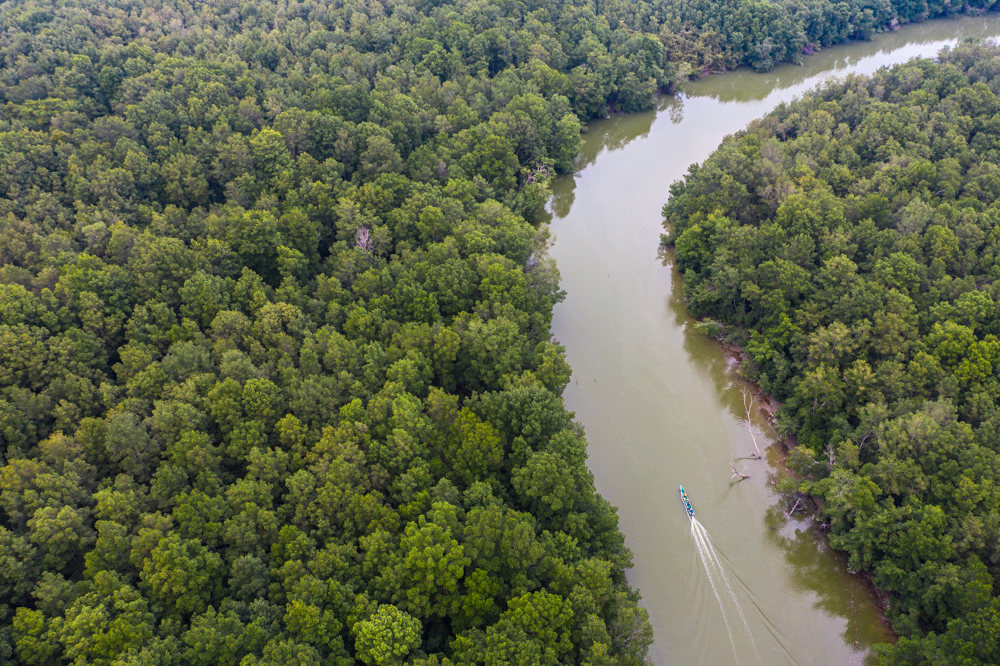
Supporting the foundations for sustainable adaptation planning and financing in Morocco
The project's goal is to support Morocco in creating a systematic framework for integrating adaptation needs into development planning. This involves establishing the foundations for sustainable finance and institutional frameworks for adaptation planning at both national and regional levels. Sub-national activities include developing regional adaptation plans for five regions: Souss Massa, Marrakech Safi, Béni Mellal-Khenifra, Draa Tafilalet and Oriental regions.
Given its geographical location, climate, and coastline, Morocco is highly vulnerable to climate change. The projected impacts by 2050 will significantly affect key productive sectors and infrastructures of the Moroccan economy. In 2022, Morocco suffered from a fourth consecutive year of low rainfall, facing a historic drought. With these structural vulnerabilities, the urgency of adaptation to climate change has become significant.
Morocco has undertaken numerous climate change adaptation and risk management projects, addressing specific issues such as water, agriculture, disaster risk, monitoring frameworks, data, and capacity building. However, these efforts have been implemented in isolation and in a fragmented manner, lacking a cohesive and interconnected approach. Moreover, climate change risks and adaptation needs have been excluded from development planning and investment decisions, particularly at the regional level.
Morocco started its national adaptation planning process in 2015 and developed a detailed NAP roadmap. Achieved in 2021, the NAP serves as a comprehensive medium- and long-term adaptation strategy, incorporating key actions and strategic objectives. The formulation of the NAP involved extensive consultations with key stakeholders and received formal endorsement from the Government.
The Moroccan Climate Change Policy and the NDC (updated in 2021) outline sectoral adaptation goals and targets and highlight critical cross-cutting pillars. The project builds upon the progress to date and helps operationalize the NAP, with a specific emphasis on the subnational level, by translating strategic objectives into tangible actions. Moreover, the project aligns with and complements other ongoing initiatives in Morocco related to adaptation and climate risk management.
In addition to the main project implementing partner, the Ministry of Energy Transition and Sustainable Development, the project works with partners in government, non-governmental organizations, and the private sector. The project seeks to create a framework for systematically integrating adaptation needs into Morocco's development planning, building upon the existing foundation for climate change adaptation. This framework will enable the implementation of high-impact adaptation measures building on strengthened institutional arrangements for adaptation planning, including strategic coherent planning instruments aligned with national priorities and sustainable sources of adaptation finance.
The project aims to design a framework for systematic integration of adaptation needs into the country’s development planning building upon the existing foundation for climate change adaptation. The expected results are grouped around the three main outcomes and include:
- setting up of coordination and governance structure for adaptation at the national and regional levels;
- strengthening national and regional M&E system;
- improving communication and awareness on adaptation planning;
- mainstreaming gender sensitivity into government’s planning processes;
- assessing climate risks and vulnerabilities for key sectors in three regions;
- identifying adaptation options, assessed and prioritized in the three selected regions;
- elaborating five regional adaptation plans;
- sustainable financing of regional adaptation plans;
- strengthened private sector engagement and investment potential.
Project updates
The project inception workshop was held in March 2022 with the participation of all project stakeholders.
Output 1.1. Regulatory text defining coordination structure and institutions mandate is in place.
A work plan and schedule for national and regional coordination bodies were created and approved, including the development of guidelines for climate information collection and for climate change risk and vulnerability assessments at the regional level for key sectors (water, agriculture, and infrastructure).
Output 1.2. National and regional Monitoring and Evaluation (M&E) system for adaptation developed.
Consultations were undertaken on building the M&E system, involving the development of climate change metrics and indicators linked to existing initiatives in Morocco. Activities have included analyzing existing systems, proposing scenarios for consolidating national platforms (MRV), drafting a guideline for gathering standardized climate information, including loss and damage data and socio-economic and gender-disaggregated data to feed into the M&E system, and assessing improvements for the Regional Information System on Environment and Sustainable Development (SIREDD).
Output 1.3. Communication and awareness to support effective adaptation planning improved.
A communication and awareness strategy was prepared and published in 2023, including the design of an adaptation repository website.
Output 1.4. Gender sensitivity is applied and addressed throughout the project life-span.
Stakeholder consultations were held in 2023, including a stocktaking of existing approaches and identifying good practices for gender integration into the project.
Output 2.1. Climate risks and vulnerabilities assessed in key sectors in 5 regions.
Consultations for mapping existing datasets and metrics were launched in 2023, accompanied by consultations for establishing guidelines and methodologies for regional-level climate change risk and vulnerability assessments in key sectors.
Output 2.2. Adaptation measures identified, assessed, and prioritized in the 5 selected.
Adaptation measures have been identified, assessed, and prioritized in five selected regions (Souss Massa, Marrakech Safi, Béni Mellal-Khenifra, Draa Tafilalet, and Oriental). Consultations related to the elaboration of regional adaptation plans for the pilot regions were held in 2023.
Output 2.3. Five regional adaptation plans formulated and integration with regional development and land-use plans facilitated.
The updated territorial climate plans (PCTs) adaptation chapter for the five pilot regions is being developed, along with a guideline for integrating PCTs into regional development and planning. Two interregional dialogues with the pilot regions are being arranged.
Output 3.1. Sustainable financing of regional adaptation plans strengthened.
Efforts to bolster sustainable financing for regional adaptation plans are in progress through consultations and activities. This includes developing an indicative project pipeline and conducting pre-feasibility studies for key adaptation priorities in each region.
Output 3.2. The private sector is strongly engaged and, its capacity to support adaptation is further enhanced.
At the national level, the House of Representatives of the Kingdom of Morocco adopted on October 18, 2022, framework law No. 03.22 forming the Investment Charter. This framework law aims to "promote private investment” to reach the rate of two-thirds of total investment by 2035, following the recommendations included in the New Development Model. This legislative breakthrough is helping to promote private-sector engagement in adaptation.
A two-day national climate investment forum was held in 2023, targeting financial institutions and private equity funds to discuss opportunities and challenges in private investments for adaptation. An assessment of the status, barriers, and opportunities for private sector investment was also undertaken.
Output 3.3. The private sector´s investment potential in adaptation is further strengthened.
The private sector's investment potential in adaptation is being strengthened through activities such as analyzing the interest, feasibility, and costs for setting up business incubators and organizing an ‘Adaptation Innovation Competition’ to encourage innovation and entrepreneurship. Additionally, an analysis of the national catastrophic risk insurance program through a public-private partnership is being conducted.
Outcome 1: The institutional framework for adaptation planning is strengthened and awareness is enhanced at national and regional levels.
Outcome 2: Regional adaptation plans (Territorial Plans against Global Warming) formulated for five vulnerable regions in Morocco and integration into regional development and land use plans facilitated.
Outcome 3: The foundations for sustainable finance for adaptation are strengthened.


Advancing Papua New Guinea’s National Adaptation Plan
The project aims to mainstream climate change into planning and policy frameworks and increase awareness amongst key stakeholders at national and subnational levels. The project supports the country’s Climate Change (Management) Act by strengthening existing frameworks and systems, enhancing the capacities of key stakeholders to effectively contribute to the adaptation planning process, and establishing a mechanism to sustain the process beyond the life of the project. The National Adaptation Plan (NAP) takes a phased approach to implementation, with the first phase focusing on four priority sectors: agriculture, health, transport, and infrastructure. Cross-cutting priority areas also aim to enable the effective and sustained implementation of climate change adaptation strategies and measures by addressing policy, institutional, coordination and technical barriers with a whole-of-society approach.
Under the UNFCCC process, Papua New Guinea’s first National Adaptation Plan (NAP) provides a strategic framework to support country-driven efforts to effectively mainstream adaptation to climate-induced risks within sectoral planning processes. The NAP takes a phased approach to implementation that considers the institutional frameworks, and the first phase focuses on priority sectors: agriculture, health, transport, and infrastructure. By defining a series of strategic actions under cross-cutting and sectoral areas that seek to facilitate the operationalization of the NAP and guide the country’s efforts to achieve Papua New Guinea’s adaptation targets by 2030 through a gender-responsive and whole-of-society approach.
The "Advancing Papua New Guinea’s National Adaptation Plan" project is aimed at strengthening institutional and technical capacities for iterative development of a NAP and integration of climate change adaptation into national and subnational planning and budgeting processes in Papua New Guinea. To achieve this, the project has informed results under three outcomes: 1) Strengthened coordination mechanism for multi-sectoral adaptation planning and implementation at different levels, 2) Integration of climate change risks into key national and sectoral policies and formulation of a National Adaptation Plan, and 3) Establishment of a financing framework for climate change adaptation action for medium-to long-term. This phase of the project has focused on four priority sectors – agriculture, health, transport, and infrastructure, along with cross-cutting areas. A second phase of the project is expected to address gaps in the remaining five priority sectors, in addition to addressing gaps in regulatory frameworks and the evidence base.
Project rationale
Papua New Guinea is highly vulnerable to climate change and is among the ten countries with the highest disaster risk worldwide (World Risk Index, 2021). Papua New Guinea is experiencing increased climate variability through changes in temperature and precipitation, increased intensity of tropical storms, increased coastal erosion and saline intrusion and inundation caused by sea-level rise. Climate change has already begun to cause considerable impact in Papua New Guinea, triggering climate-related hazards, such as heatwaves, landslides, storms, and floods, alongside slow-onset impacts of increased disease and droughts. These impacts have caused substantial damage and affect the daily lives and livelihoods of the nation.
Building resilience to climate change has featured in the national dialogue and political commitments for over a decade. Recognized as an acute challenge for the country, the Government and partners have committed to mainstream climate action in their planning and delivery. Major policy initiatives such as the Vision 2050 and the National Strategy for Responsible Sustainable Development and legislation such as the Climate Change (Management) Act (CCMA) have broadened efforts to include better natural resource management, conservation and sustainable growth. Growing legal architecture has supported these efforts. Papua New Guinea’s geography, its economic base, its exposure to external shocks and limited capacity across the Government, however, make these challenges difficult to address.
Project results
The project has delivered the following results under the three Outcomes.
Outcome 1: The coordination mechanism for multi-sectoral adaptation planning and implementation at different levels is strengthened.
- Reviewed legal and policy barriers to the integration of climate change into development planning
- Developed capacities of the CCDA to steer the climate change coordination and integration process
- Strengthened mechanisms for regularly reviewing and updating adaptation priorities.
Outcome 2: Climate change risks are integrated into key national and sectoral policies and the NAP is formulated.
- Established a system for economic analysis and appraisal of priority adaptation options and integrate climate change adaptation priority interventions into the Environment Act, National Disaster Mitigation Policy and MTDP3, and sector-specific policies in Agriculture, Health, Infrastructure and Transport
- Formulated the NAP with a specific focus on Agriculture, Health, Infrastructure and Transport sectors, as well as cross-cutting areas.
Outcome 3: Financing framework for climate change adaptation action in medium-to long-term is established
- Developed a NAP financing and investment strategy, including the development of four sector-specific idea notes on priority adaptation interventions to feed into Papua New Guinea’s country programme under the GCF Readiness project.
Outcome 1: The coordination mechanism for multi-sectoral adaptation planning and implementation at different levels is strengthened.
Outcome 2: Climate change risks are integrated into key national and sectoral policies and NAP is formulated.
Outcome 3: Financing framework for climate change adaptation action for medium-to long-term is established.
Momase Region Consultation Workshop (2021)
Exposure: Advancing together in the Asia Pacific (2021)
Southern Region Consultation Workshop (2021)
National Consultation Workshop (2021)
CCDA EMTV (Television Station) Story (2021)
Southern & Highlands Region Combined Adaptation Planning Training (2022)
Momase Region Adaptation Planning Training (2022)
New Guinea Islands Region Adaptation Planning Training (2022)
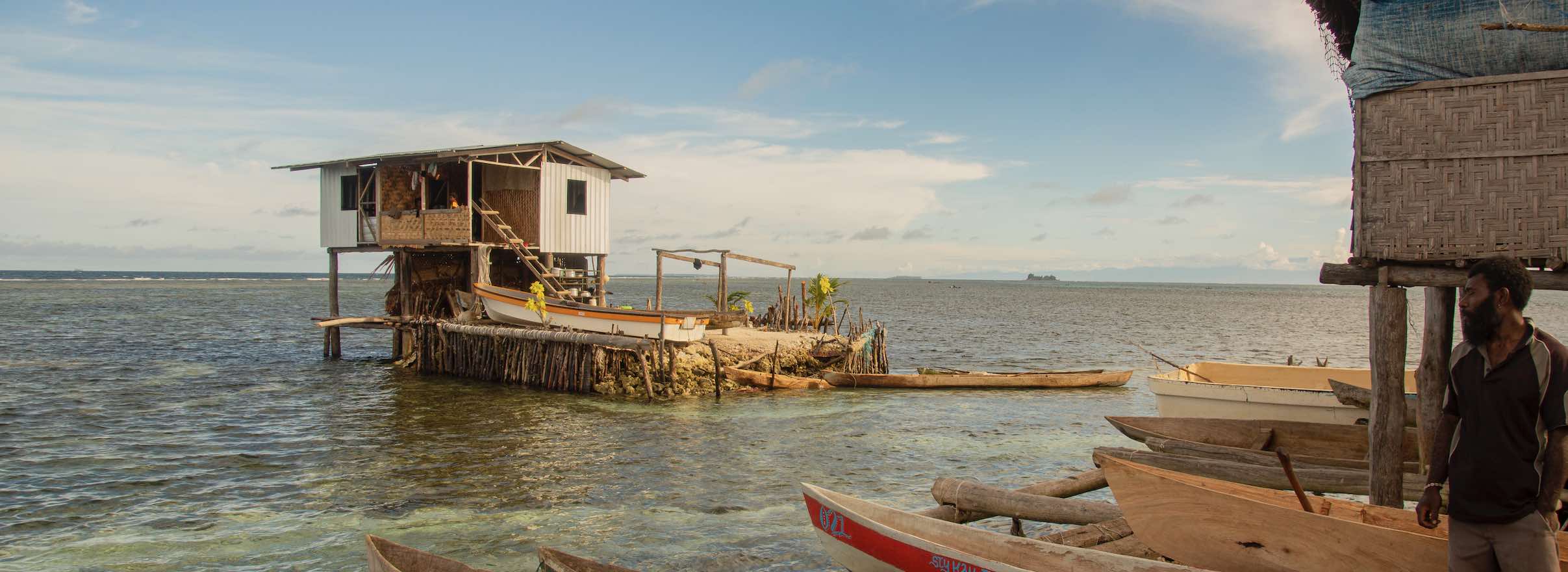
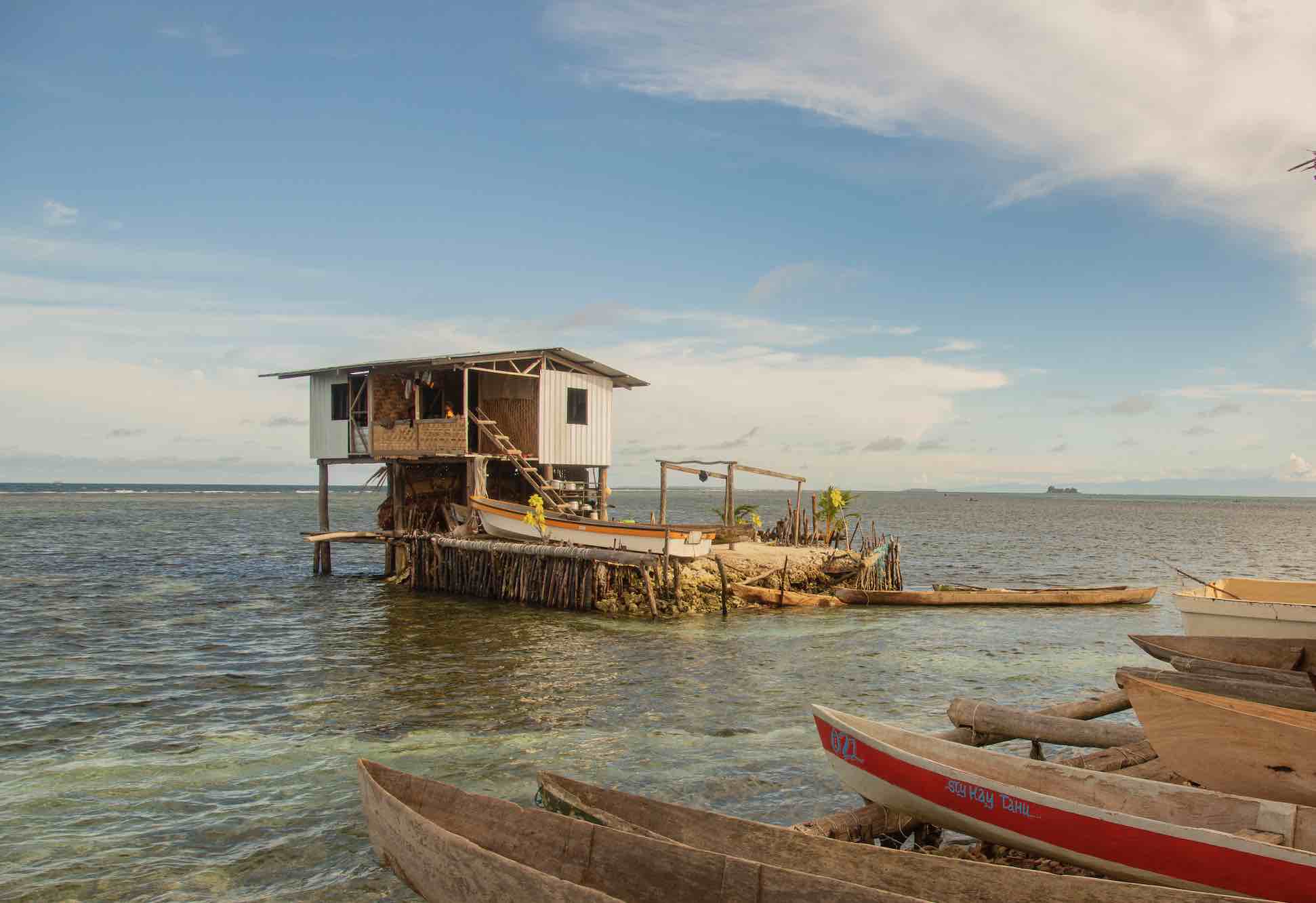
Advancing medium and long-term adaptation planning in the Republic of Serbia
The project builds on Serbia’s Nationally Determined Contributions (NDC) commitments to advance medium and long-term adaptation planning in the Republic of Serbia with a National Adaptation Plan (NAP), providing support for iterative improvements to the NDCs under the enhanced transparency framework requirements. The project aims to enable the Government of Serbia to build and strengthen capacities for mainstreaming climate change adaptation, produce actionable climate risk and vulnerability assessments, and implement effective methods, tools and information systems to better inform decision-making on climate risks. Project activities address the main barriers to the integration of climate change adaptation into national, sectorial, and local government planning and budgeting, as well as support the formulation of financing strategies and mechanisms for the scaling up of medium- and long-term adaptation.
The "Advancing medium and long-term adaptation planning in the Republic of Serbia" project aims to increase the country’s capacity to address its climate change vulnerabilities. The project is proposed in two phases and focuses particularly in the areas related to the agriculture-water management nexus, and the sectors of energy infrastructure, transport infrastructure and construction.
Climate change impacts are already evident in Serbia. The IPCC AR5 has identified southeastern Europe, where Serbia is located, among the most vulnerable regions in terms of exposure to the negative effects of climate change. Climate change is expected to have adverse effects on the intensity and frequency of floods and droughts, and on the quality and quantity of yields of major crops. Serbia’s recent history of floods and natural disasters has shown that rural low-income communities are particularly vulnerable to the impacts of climate change due to heightened water insecurity, increased health risks and reduced agricultural productivity.
The project builds on UNDP support to Serbia in February 2017 that resulted in a stocktaking report and a plan of action to advance the National Adaptation Plan (NAP) process, validated by representatives of key sectors and the Ministry of Environmental Protection. The stocktaking exercise highlighted the existing weaknesses and demonstrated the prevailing barriers to climate change adaptation and disaster risk reduction planning in Serbia. The results confirmed that to adequately address climate change vulnerabilities, Serbia must overcome its current information gaps, capacity weaknesses, as well as a general lack of awareness of climate change adaptation – both at the national and sub-national levels. The report further identified that climate change is not integrated into existing policies, or their associated budget priorities.
The overall goal of the project is to reduce climate change related risks throughout Serbia by strengthening institutional and technical capacities that support integrated climate change adaptation planning and programming. This will be achieved through three outputs and related sub-outcomes across two phases:
- In the first phase, the emphasis is given to the development and setting up of the national mandate and steering mechanism for long-term climate change adaptation and capacity building for effective development of the NAP implementation strategy. The first phase also focuses on improved management of the adaptation related knowledge and data, addressing institutional capacity gaps and needs in specific sub-sectors and at all levels of governance, establishing a system for effective monitoring and reporting on climate change adaptation measures and actions;
- Building on the results and achievements from the first phase, the second project phase will focus on capacity building for setting up a sustainable financing strategy to support medium- and long-term climate change adaptation. Both project phases will be accompanied by a NAP and adaptation engagement and communications plan and concrete measures at both national and local levels.
In addition to the implementing partner, the Ministry of Agriculture, Forestry and Water Management, other project partners include the Ministry of Environmental Protection, Ministries in charge of energy, infrastructure and construction, local self-governments, Standing Conference of Towns and Municipalities, Chambers of Commerce, civil society and others.
Project updates
- A draft National Adaptation Plan (NAP) developed;
- Introduction of a bylaw (of Law on Climate Change) that will regulate the implementation of the NAP for the country and the preparation of provincial plans;
- Introduction of an advanced university degree programme on adaptation;
- Priority adaptation interventions in all key sectors identified;
- An interactive/digital climate atlas for Serbia launched;
- “Analysis of available climate and socio-economic information” conducted, establishing the current state-of-play and steps to be undertaken to build and strengthen institutional capacities for climate change adaptation;
- “Institutional capacities for climate change adaptation” report conducted, providing an overview on existing capacities and capacity building needs at the national and local self-government levels;
- “Existing policy, regulatory and institutional framework” report conducted and recommendations on improvement of specific policy and regulatory measures for climate change adaptation prepared;
- Reports on the impacts of climate change on key economic sectors such as agriculture and water management nexus, energy sector, construction and roads infrastructure, forestry and health with recommended adaptation measures;
- Economic assessment of the damage and losses caused by climate change for local self-governments conducted;
- Recommendations for better integration of nature-based solutions into the revised NDCs for Serbia provided;
- Representatives of the line ministries and other authorities participated in trainings, online workshops and consultative meetings on climate change adaptation.
- A series of press workshops held on the topic of climate change in Serbia, involving more than 500 stakeholders, at national and local levels.
Outcome 1: National mandate and steering mechanism in place for long-term climate change adaptation
Outcome 2: NAP implementation strategy developed
Outcome 3: System to monitor progress on adaptation strengthened and financing strategy for medium- and long-term climate change adaptation established.
Webinar: “National adaptation plan (NAP) systematic and risk-shaped response to climate change” (2020)
Održan prvi Dijalog o prilagođavanju Srbije na klimatske promene (2021)
The first workshop for journalists on the topic of climate change in Serbia (2021)
Continuation of training on the topic of adaptation to climate change within the NAP project (2021)
The third training in a row on the topic of adaptation to climate change within the NAP project (2021)


Integrating Climate Change Adaptation into Tanzania’s Planning Processes
The project aims to strengthen Tanzania’s adaptive and resilience capacities. By proposing the three inter-connected outcomes focusing on enhancing governance and coordination on adaptation planning, strengthening evidence base to design implementable solutions, and developing a costed national adaptation plan and concept notes, this project helps to overcome the overall problem of inadequate integration of climate risks and adaptation measures in Tanzania’s national and sectorial development plans. As a result of the project activities, a comprehensive nationwide evidence-based vulnerability assessment will be generated to help design adaptation solutions, a robust financing strategy will be developed, and three concept notes will be prepared to seek further funding from the Green Climate Fund (GCF) to address priority adaptation measures in various sectors.
The project “Integrating Climate Change Adaptation into Tanzania’s Planning Processes” was launched in August 2021 with the main objective to strengthen Tanzania’s adaptive and resilience capacities by facilitating the integration of climate change adaptation planning processes. This objective will be achieved through the following three outcomes: strengthening adaptation planning governance and institutional coordination, improving evidence base for designing adaptation solutions, and developing a national adaptation plan (NAP).
Rising temperatures, longer dry spells, more intense rainfall and sea level rise make Tanzania the 26th most vulnerable country to climate risks. More than 70% of the natural disasters in Tanzania are climate change related and are linked to recurrent droughts and floods (NDC 2021). Several climate change vulnerability studies have been undertaken in the country, however, they covered only few parts of the territory. A stocktaking exercise undertaken in 2018 has identified the following gaps and barriers to the adaptation planning process: (1) a lack of an effective national institutional framework for integrating climate risks and adaptation measures into planning, (2) a lack of information on climate risks and vulnerabilities, (3) a lack of capacity at different levels, and (4) absence of clear linkages between NAP and NDCs. In an effort to deal with climate change, the Government has initiated several foundational policies and initiatives to address climate impacts and support the development of a NAP process. These include a National Climate Change Strategy (2012), the Zanzibar Climate Change Strategy (2014), Climate Change Adaptation Plans for Water (2012) and Agriculture (2014). However, despite these policies and initiatives, climate change adaptation planning and implementation are still in the early stages of development.
This project addresses the identified gaps and barriers and aims to overcome the overall problem of inadequate integration of climate risks and adaptation measures in Tanzania’s national and sectorial development plans. Outcomes 1 and 2 address the barriers related to limited coordination, lack of information, limited capacity and lack of a financing strategy. Outcome 3, designed to overcome the barriers related to lack of financing strategy, weak linkages in policymaking and lack of capacity and coordination, will be dependent on the results of both outcomes 1 and 2. Through key activities grouped around the three outcomes, the project aims to deliver the following results:
- build capacities and empower the coordination mechanism to internalize the process within the country’s development planning and budgeting cycles;
- embed climate change and specifically adaptation as part of the national M&E system;
- develop tools and methodologies for current and future climate risks assessments;
- establish a national financing mechanism for climate change and widen resource mobilization scope through encouraging public private partnerships and involving other domestic, regional and international partners, CSOs, and financial institutions.
Project updates
In its updated NDC (2021), Tanzania has committed to promote effective adaptation measures, including in the priority areas such as access to clean water, sustainable livelihoods and climate-smart rural electrification. The NAP project Inception meeting and the first Project Steering Committee meeting to validate the annual work plan took place in September 2022. Considering the importance of the NDC implementation and the NAP alignment for the country, key stakeholders are aiming to collaborate closely on fast-track implementation of the NAP project.
Outcome 1: Adaptation planning governance and institutional coordination strengthened.
Outcome 2: Evidence base for designing adaptation solutions strengthened.
Outcome 3: A national adaptation plan developed and validated.

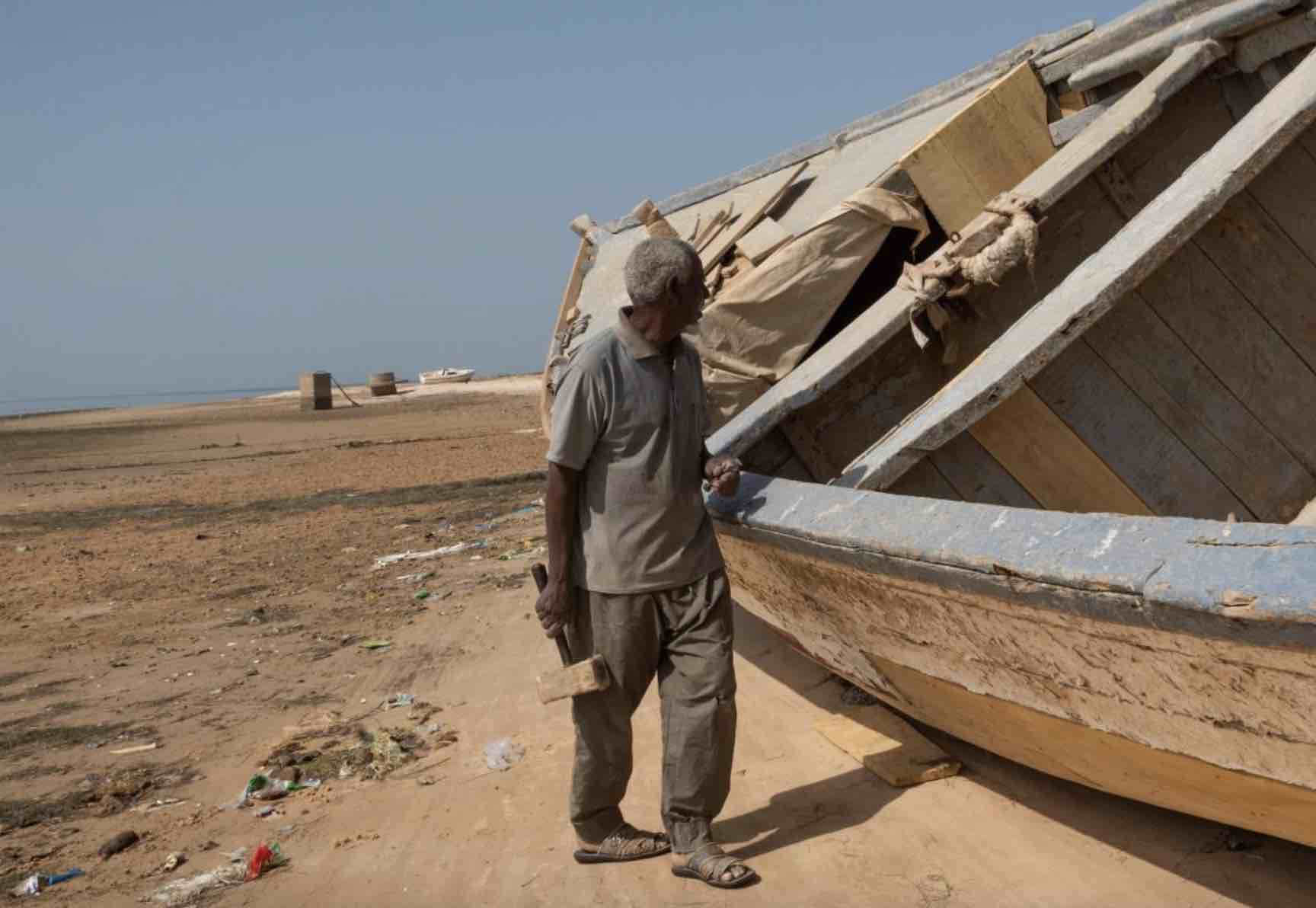
Integrated Flood Management to Enhance Climate Resilience of the Vaisigano River Catchment in Samoa
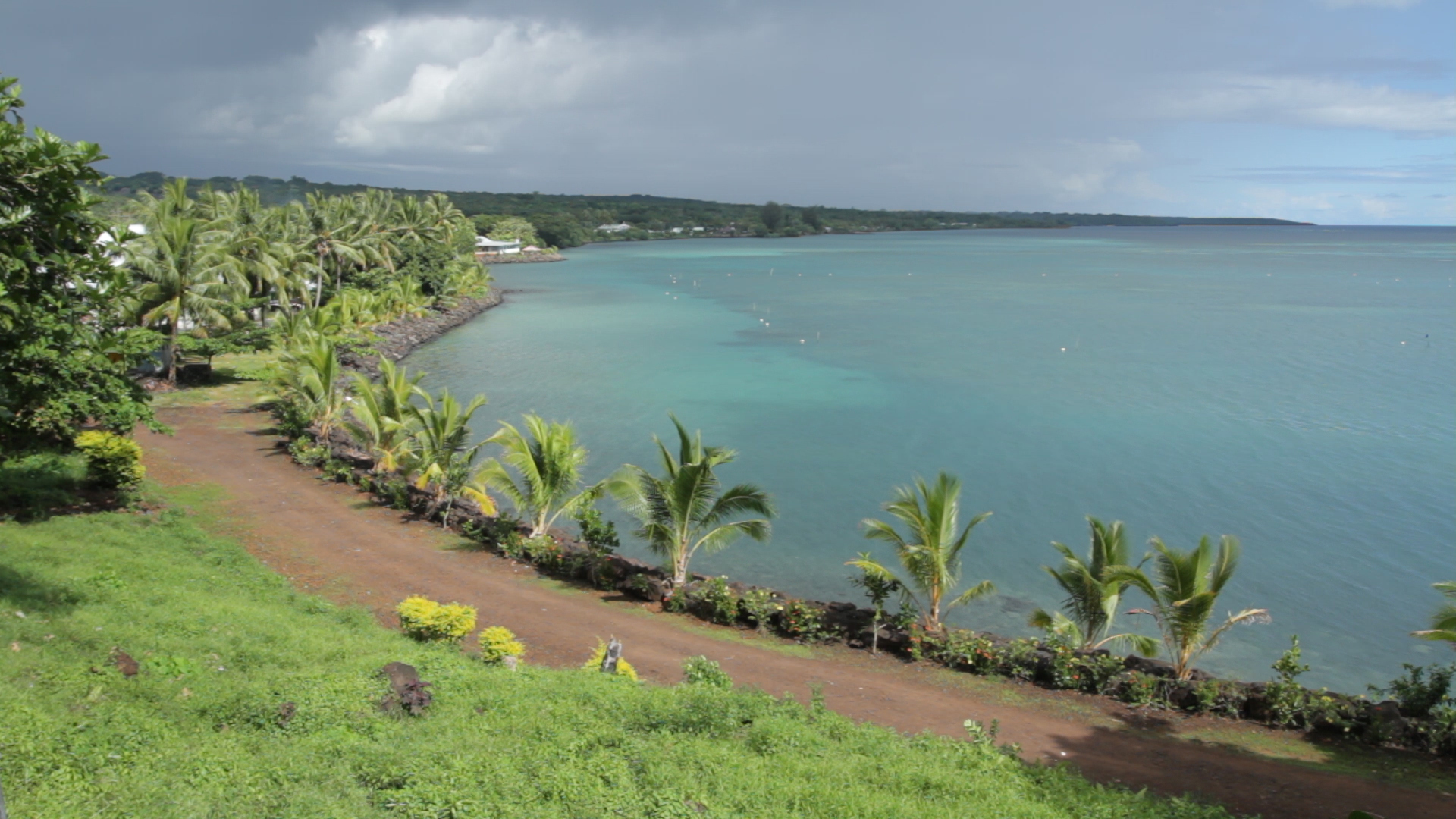
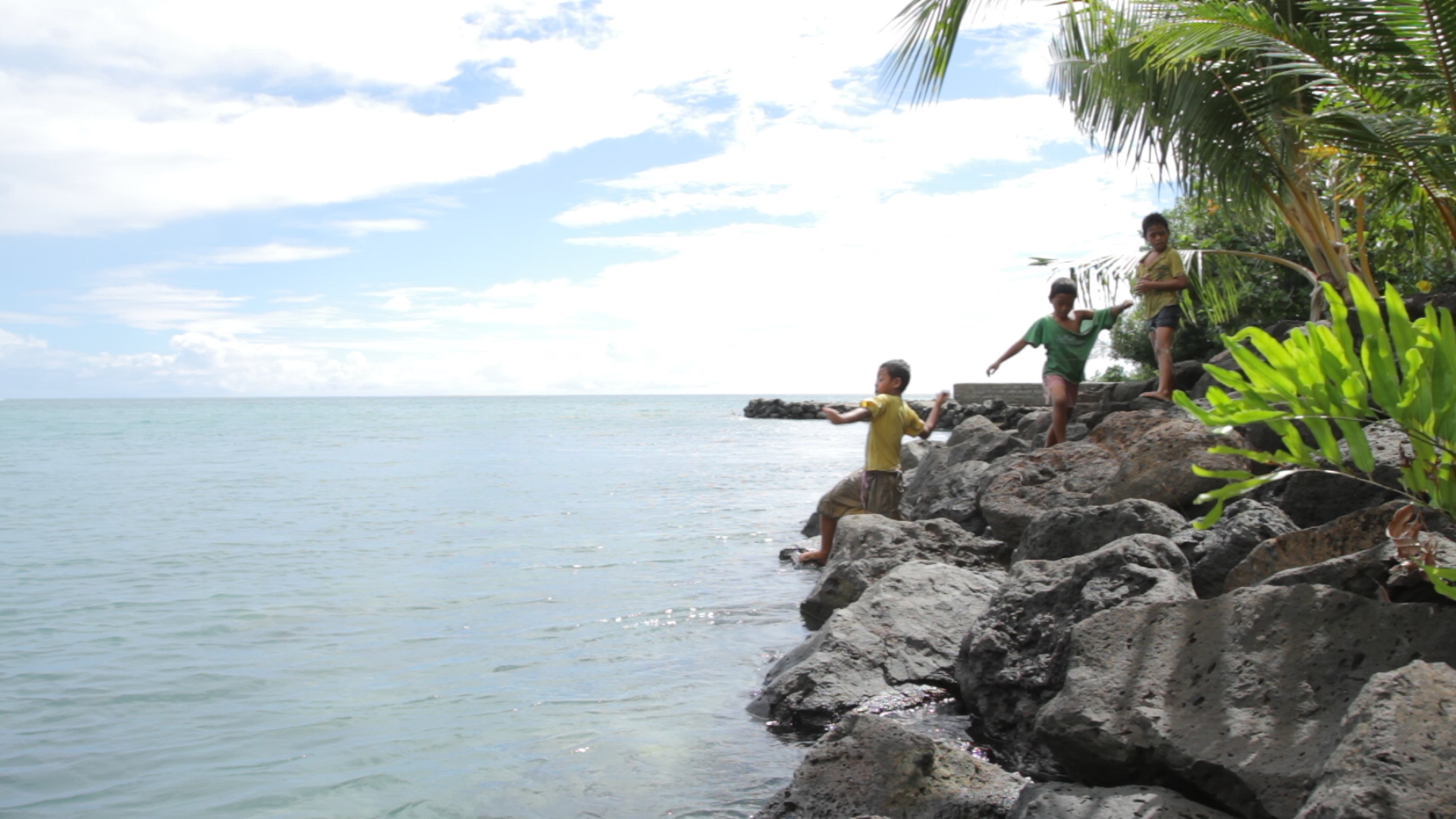

Newsletter
Vaisigano Catchment Project (GCF-VCP) Newsletter | Issue 29, August - September 2022
ProDocs
GCF resources will be used to implement a combination of integrated watershed and flood management works including both hard and soft measures. This includes upgrading river works to cater to increased water flows during flood events (taking into account the likelihood of the increased frequency of extreme events), ensuring that infrastructure works, and home dwellings, government and private-sector buildings are made more secure and provide adequate shelter in case of floods and their aftermaths. Additionally, the project will ensure that when floodwaters occur, the excess waters are channeled away through an effective, efficient, and fit-for-purpose drainage system. The project will consequently play a critical role in assisting the urban population and economy to effectively manage the inevitable increased intensity and frequency of flooding.
Direct benefits from these interventions include reduced risk of damage to public and private infrastructure/assets; reduced possibility of loss of life; and enhanced land value in flood-prone areas. Indirect benefits include reduced losses in income/sales; reduced costs of clean-ups, maintenance and repairs; reduced costs of relief and response efforts; and reduced possibility of health hazards. In addition to these 26,000 direct beneficiaries, the general population of Samoa will benefit from the safeguarding of critical economic assets and learning that will be generated.
In addition, mid and upstream ecosystem and community-based adaptation measures will enhance capture, infiltration, storage and delayed release of rainwater in soils and biomass, and water retention ponds will serve both climate-smart agribusiness development and combat degradation of vulnerable ecosystems through appropriate agro-forestry land-use practices.
Addressing Climate Change in Samoa
Recent extreme events have resulted in approximately US$200 million worth of damages during each event. Climate projections for Samoa suggest that the risk of climate induced events will increase, potentially undermining development progress in urban Apia where the majority of the population and economic activity is located.
Given the topography of the country, extreme events result in significant river discharge that results in flooding of lowland areas. Recent tropical events such as Cyclone Evan have caused significant damage to both public and private assets as a result of flooding, resulting in serious health impacts. Urban infrastructure has suffered considerably from the recurrence of flooding and is unable to cope as climate change-related events are expected to become more frequent and intense.
Projected climate change scenarios cited by the Australian Commonwealth Scientific and Industrial Research Organization (CSIRO) suggest that Samoa is expected to have more frequent and extreme rainfall events; more frequent and longer drought events; increased air and water temperatures; sea level rise; and more frequent extreme wind events.
The project represents the Government of Samoa’s initial steps in operationalizing a comprehensive flood management solution for the likely consequences of extreme events in Apia, the capital with about 80,000 people. In this project, three interlinked project outputs will be pursued:
- Capacities and information base strengthened for the Government of Samoa to pursue an integrated approach to reduce vulnerability towards flood-related risks;
- Key infrastructure in the Vaisigano River Catchment are flood-proofed to increase resilience to negative effects of excessive water; and
- Upgraded drainage in downstream areas to increase capacity and allow for more rapid outflow of flood waters.
'Launching of the Flood Alert Sirens (a first of its kind in Samoa) within the vicinity of the Vaisigano River Catchment Area', Government of Samoa, November 29 2022
'CSSP Market Day for Beneficiaries of the Green Climate Fund-Vaisigano Catchment Project (GCF-VCP) Ecosystem based Enterprise Development Programme (EbAEDP)', Government of Samoa, September 8 2022
'Celebrating the women at the helm of Samoa’s biggest ever climate change and disaster resilient project on International Women’s Day', March 8, 2019.
Monthly Project Newsletter, Issue 1, July 2019.
'Rebuilding the Lelata Bridge to be tougher and higher', Samoa Observer, January 23, 2019.
'GCF Vaisigano River Catchment Site Visit with Assistant Secretary General of the United Nations and Director of UNDP's Regional Bureau for Asia and Pacific, Haoliang Xu', UNDP Samoa Facebook, June 2018.
'Samoa kicks off climate adaptation project to benefit 1 in 3 citizens facing flood risk' UNDP, October 25, 2017. In the lead up to COP climate talks in Bonn, the launch of a Green Climate Fund-financed US$65 million project signals strong global support for climate-resilient development in Small Island Developing States.
'Every dollar counts in fight against climate change - New GCF Funding for Samoa' - Samoa Observer, December 16, 2016. Op-ed celebrating Somoa's recently approved US$58 million Green Climate Fund project.
YouTube
Learn more about the climate challenges facing Samoa, and how UNDP is working to address those challenges and reduce risks.
Samoa GCF-funded project to help address #climate-induced flooding
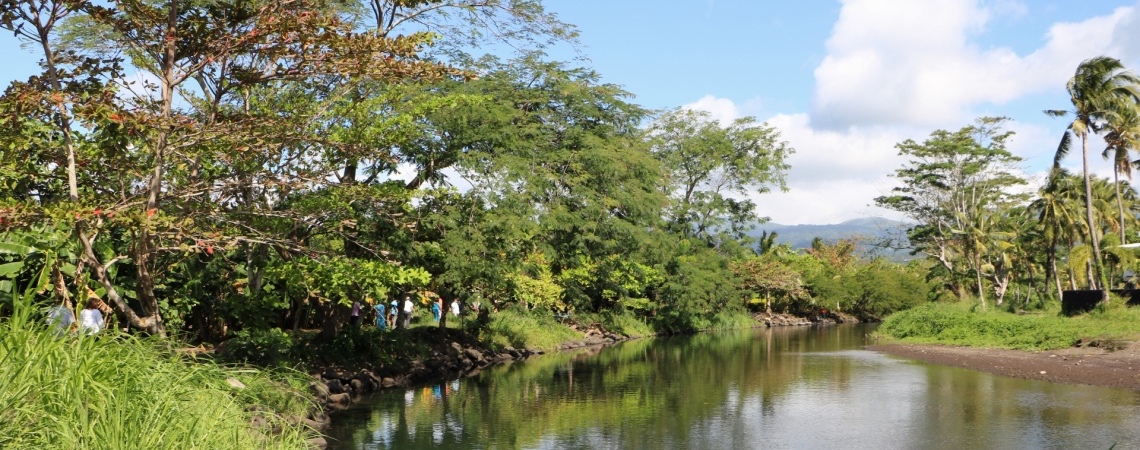
Output 1. Strengthening capacities and mechanisms for integrated approach to reduce flood-related risks in place.
Output 2. Key infrastructure in the Vaisigano River Catchment are flood-proofed to increase resilience to negative effects of excessive water.
Tuvalu Coastal Adaptation Project
Under the Tuvalu Coastal Adaptation Project (TCAP) the Government of Tuvalu is implementing measures to reduce the impacts of climate-induced sea level rise and intensifying storm events on key infrastructure.
Building on existing initiatives, and using a range of measures for coastal protection - including eco-system initiatives, beach nourishment, concrete and rock revetments, and sea walls - the project focuses on building coastal resilience in three of Tuvalu’s nine inhabited islands. A total of 2,780m of high-value vulnerable coastline, with houses, schools and hospitals, will be protected from increasingly intensive wave action and coastal inundation.
Building national capacity for resilient coastal management is also a key focus of the seven-year project, set to be completed in May 2024.
It is expected that the project will help to catalyse additional coastal adaptation finance from other donors.
Visit the project website https://tcap.tv
PIFs
Tuvalu is the fourth smallest nation in the world, comprising nine inhabited islands with a population of 10,640. With an average elevation of only 1.83 meters, it is one of the most vulnerable countries in the world to the impacts of climate change. The combination of two manifestations of climate change – continually intensifying cyclone events and sea level rise – threaten to have dire impacts on Tuvalu. In 2015 Cyclone Pam displaced 45% of the population. The purpose of this project is to reduce the impact of increasingly intensive wave activity, through the compounding effects of sea-level rise and intensifying storm events, that is amplifying coastal inundation and erosion. It is evident and well accepted that the effects of climate change will only worsen coastal inundation and erosion in Tuvalu. This project will increase the coverage of coastal protection from the baseline 570m to 2,780m benefiting nearly 29% of the entire population. Investments on coastal protection are directed at coastlines in three islands (Funafuti, Nanumea and Nanumaga) along areas that have a high concentration of houses, schools, hospitals and other social and economic assets (henceforth referred to as “high-value” coastline).
Despite the extreme level of vulnerability, Tuvalu currently does not have a single engineered coastal protection infrastructure project that is designed to withstand current and future impacts of sea-level rise and intensifying tropical storms. The only exceptions are two interventions that are currently being designed for a length of 570 m in Funafuti and Nukufetau. The combined factors of high upfront investments required for coastal protection, the public good and non-revenue nature of the required solutions, and the inability of the Government to service loans, have permitted the Government and the community to implement the recognized solutions only at a slow pace and in a highly fragmented manner in the past. Because available resources are generally far smaller than what is required for implementing appropriate response measures, the past initiatives have often resorted to community-scale interventions that hardly withstand the current wave energy, let alone integrating climate change risks into the design. Without support, this sub-optimal practice is likely to continue for the foreseeable future. This project is proposed so that Tuvalu can, finally, take comprehensive and systemic steps to manage coastal inundation risks.
Output 1: Strengthening of institutions, human resources, awareness and knowledge for resilient coastal management.
- Technical capacity, knowledge and awareness strengthened for monitoring, protection and maintenance of coastal protection infrastructure.
The jurisdiction of coastal protection is shared across the Department of Lands and Survey (DoLS), Public Works Department (PWD) and Department of Environment (DoE). However, none of these departments currently have the technical capacity to monitor the dynamic processes of coastal change over time nor the capacity to design potential coastal interventions. Nor is there sufficient capacity within the Climate Change Policy Unit (CCPU) to coordinate the work of these departments for effective coastal protection. Due to this limitation, the Government is not able to carry out vulnerability assessments, site assessments and coastal design, make informed decisions about pragmatic solutions for coastal protection, and identify potential funding sources for implementation. Instead, they generally have to wait for a donor, often with particular areas of financing priority, to approach them. This lack of ability to carry out a preliminary technical assessment contributes to an increasing sense that the issue is out of their control and eventually to limited ownership. Further, although the CCPU was newly established in 2015 to coordinate government’s actions for climate change adaptation and mitigation, medium- to long-term capacity building efforts are needed in the technical areas of climate change, coordination, project design and management, financial management, knowledge management and reporting.
- Long-term national human resource capacity and awareness enhanced for sustainable coastal protection
In the specific context of Tuvalu, the capacity building support conventionally delivered in donor-supported projects has been insufficient to establish a foundation for sustainability. This is because typically the capacity building support in these projects is exclusively targeting the existing government staff, which is small in number, and the progress is immediately undone if the staff members leave the government system. This approach to capacity building represents numerous missed opportunities for transforming the country. Climate change adaptation is defined by UNFCCC as a series of “adjustments in ecological, social, or economic systems in response to actual or expected climatic stimuli and their effects or impacts” and by nature, it is an iterative, long-term process. Adaptation efforts in SIDS like Tuvalu must embrace, in their core principle, a strategy to build capacity of the entire country that goes well beyond that of the government system.
Output 2: Vulnerability of key coastal infrastructure including homes, schools, hospitals and other assets is reduced against wave induced damage.
- Coastal protection design, site-specific assessments and ESIA undertaken in all islands in a participatory manner
A detailed, participatory design and site-specific assessment will be carried out in all the islands in Tuvalu. This process is needed not only to make final adjustments in the design of the coastal protection measures (such as the angle of the structure and protection of the toe of the structure) to maximize the effectiveness and longevity of the structure for the three targeted islands, but also to equip the other, non-targeted islands, with the necessary information for attracting donor resources in the future, including from GCF. The multi-stakeholder, gender-responsive planning and design process will take place to ensure that beneficiaries are fully informed and are able to contribute to the detail design and functionality of the coastal protection measures in each of the islands. The process will, for example, look into how the target community (men, women, youth, and elderly) interacts with the ocean and coastline, which is an important design element of coastal protection infrastructure. The assessment will result in a set of adaptation options, detailed technical drawings, bill of quantity, tender documents and detailed costing of the interventions. As described earlier, this process will be used as an opportunity to provide hands-on trainings for government staff from the DLS, PWD and DoE.
Resources will be used to put in place a robust coastal protection infrastructure along 2,210m of vulnerable coastlines of Funafuti, Nanumea and Nanumaga to defend high value assets of the targeted islands. This translates to targeting nearly 28% of the high value zone of the country, which currently has no protective measures. Also this represents 10% of all vulnerable coastlines in the country. The design criteria are set such that the design will reflect the projected sea level rise and notional 200-year return period storm surge events. Geo-textile container revetments in Nanumea and Nanumaga will have minimum design life of 25 years; but, with the appropriate selection of vandal resistant bags for the top layer walls and, training of PWD and community members for monitoring and simple repair, the life expectancy is expected to be longer.
Output 3: A sustainable financing mechanism established for long-term adaptation efforts.
- All Island Strategic Plans and annual budgets integrate island-specific climate risks through gender sensitive, participatory processes
Successful climate risk mainstreaming into ISPs and effective use of available domestic financing will facilitate island-led actions, enhance planned and autonomous adaptation, and ultimately, increase resilience at the island level. In the context of coastal interventions envisaged in the GCF project, a strengthened ISP process will improve longer-term impact and replication potential of the GCF investments as domestic resources, allocated through ISPs, are expected to be used to maintain the GCF investments and to expand the coastal protection coverage. For the expansion of coastal protection measures beyond donor-assisted projects, lower-cost ecosystem-based approaches are a more realistic option given the limited available finance domestically. This activity will strengthen the critical foundation to facilitate this process.
- Capacity of Kaupules, Falekaupules and community members strengthened for monitoring coastal adaptation investments
This project will also be used to strengthen the capacity of both outer island administrations and community members for monitoring, reporting and verifying the progress of adaptation investments as an integral element of ISP support. Due to the special geographical condition of Tuvalu where islands are several days away from the central government, upward accountability to the central government and downward accountability to citizens can easily be diluted among kaupules. Thus, nurturing the sense of oversight among community members becomes critical for ensuring transparent, sustainable, demand-driven service delivery. Support to ISP formulation, budgeting and execution, the focus of Activity 3.1, and support for community members for an independent oversight of the ISP process, the focus of Activity 3.2, must go hand-in-hand. At the same time, outer island administrations also need to develop their capacity to report the use of resources and progress of investments to their constituents.
Project Update, October 2018
- With the concept designs already generated for the Nanumea, Nanumaga and Fogafale shorelines, the next step is to develop a detailed design with the help of an engineer. This will then be followed by a full assessment of hazards, environmental and social impact assessment, and coastal risk assessment before the implementation of innovative shoreline intervention measures appropriate to the location’s topographical and bathymetrical conditions.
- Under the TCAP’s scholarship programme, two Tuvaluan students, Palakua Sakaio and Tanu Sumeo have, in July of this year, commenced their studies at the University of Canterbury in Christchurch, New Zealand and the University of South Australia in Adelaide.
- The project is in the process of identifying the specific training and capacity needs of different Government agencies in Tuvalu with regards to their ability to address coastal adaptation and to ensure that the project meets the government’s requirements and there is maximum opportunity for capacity development during its implementation. This exercise will feed into a Strategy and Action Plan for Government Capacity Development which will be carried forward during the lifetime of the project. The technical capacities assessed are basically knowledge-based with direct links to the project. These include areas such as coastal hazards, coastal processes, coastal institutional arrangements, coastal interventions, project planning, coastal geospatial data, vulnerability assessment, concept designs, environmental & social impact assessments, risk assessment, coastal intervention construction, monitoring & maintenance, and adaptive management.
- To improve the ability of the Kaupules’ to address climate change and sea level rise risks and coastal adaptation, an operational manual has been developed to channel funds under the performance-based grants system to the Island’s Kaupules.
Funding Proposal approved by Green Climate Fund Board: 30 June 2016
Local Project Appraisal Committee meeting (LPAC): 15 February 2017
Funded Activity Agreement (FAA) effectiveness reached: 7 June 2017
Project Document signature between UNDP and Government: 14 June 2017
First disbursement received: 11 July 2017
Launch and inception workshop with key stakeholders: 30 August 2017
'Advanced Topographic and Bathymetric Survey to Support Tuvalu’s Adaptation Efforts', UNDP Pacific, April 24 2019. Detailed and accurate information on the relationship between land height and sea level will be made available for the first time in Tuvalu as the Tuvalu Coastal Adaptation Project (TCAP), funded by the Green Climate Fund (and implemented by the United Nations Development Programme, has signed a contract with Fugro to undertake an airborne LIDAR survey across Tuvalu’s nine atoll islands in the coming month. LIDAR (Light Detection and Ranging) is a remote sensing method that uses light in the form of a pulsed laser to measure ranges to the earth. See also Fugro release here.
SPC and UNDP partner to support coastal adaptation in Tuvalu - 20th December 2018
'Youths are the future of climate resilience', Fiji Times, February 11, 2018. As well as addressing the impacts and causes of climate change, we need to look to the solutions. How are communities going to, not just adapt, but build their resilience? What does resilience even mean? And how do we do it? One of the keys to building it, and addressing the impacts of climate change, is ensuring countries themselves are leading in both developing and implementing the solutions.
'Tuvalu scholarships awarded (under Tuvalu Coastal Adaptation Project)', Radio New Zealand, February 8, 2018. Two students from Tuvalu have been granted university scholarships under the Tuvalu Coastal Adaptation Project. Investing in young people is among the country's environmental adaptation plans. Moeo Finauga said the students would be offered jobs on the project once they had completed their studies.
'Shoring up Tuvalu's Climate Resilience', UNDP Asia Pacific blog, August 30 2017. As the Tuvalu Coastal Adapation Project launches, celebration in Funafuti. Regional Technical Advisor, Yusuke Taishi, shares his thoughts on the occasion.
'Tuvalu’s climate resilience shored up with launch of US$38.9 million adaptation project', UNDP Pacific, August 30, 2017. The Prime Minister of Tuvalu along with the United Nations Development Programme (UNDP) officially launch the Tuvalu Coastal Adaptation Project (TCAP) marking the start of an ambitious, large-scale push to protect the Pacific island nation from climate change.
'Tuvalu signs financing agreement to access Climate Fund' - Tuvalu Government, July 5 2017. Tuvalu has become the first Pacific Island country to sign the Financing Framework Agreement to access funds for coastal protection activities from the Green Climate Fund. The elated Prime Minister said the financing agreement, worth almost US$39 million will fund the Tuvalu Coastal Adaptation Project on the three islands of Nanumea, Nanumaga and Funafuti. The process will begin in August with a workshop where Tuvalu Government and UNDP will coordinate logistics.
'Government of Tuvalu launches new coastal protection project to bolster resilience to climate change' - UNDP, July 6, 2017. A signing ceremony took place in Suva on 14 June between the Tuvalu Prime Minister Enele Sopoaga and UNDP Resident Representative Osnat Lubrani. “The protection of our country’s vulnerable coastlines is an urgent priority of the Government of Tuvalu,” said the Prime Minister of Tuvalu, Hon. Enele Sosene Sopoaga.
'Green Climate Fund finance allocation builds Tuvalu’s resilience' - Green Climate Fund, July 3, 2017. The Green Climate Fund is transferring funds to help strengthen the island nation of Tuvalu against the double climate threats of rising sea levels and destructive cyclones. GCF is sending the first USD 2 million tranche of its USD 36 million contribution.
Tuvalu GCF-funded coastal adaptation project to protect 1/3 of country

Output 1: Strengthening of institutions, human resources, awareness and knowledge for resilient coastal management.
Output 2: Vulnerability of key coastal infrastructure including homes, schools, hospitals and other assets is reduced against wave induced damage.
Output 3: A sustainable financing mechanism established for long-term adaptation efforts.

Economics of Climate Change Adaptation Programme in Asia and the Pacific
The Economics of Climate Change Adaptation Programme in Asia and the Pacific
The objective of this programme, the first phase of which ran between 2012 and 2015, was to strengthen the capacity of technical officers in Ministries of Planning/Finance, as well as line Ministries (Environment, Agriculture, Water, Public Works, and others) to assess economic costs and benefits when evaluating different adaptation alternatives, as they relate to medium- and long-term national, sub-national and sectoral development plans.
The programme aimed to produce a cadre of practitioners in government who can prepare high-quality economic analyses related to climate change adaptation projects and programmes. In coordination with other ongoing and planned UNDP initiatives, the programme was designed to strengthen governments’ capacity to more fully integrate climate change adaptation into national, sub-national and sector planning and budgeting.
Ultimately, the programme sought to institutionalize these important analytical skills into ministries and departments, and to enable countries to formulate economically efficient and climate resilient development plans, including National Adaptation Plans (NAPs) - a process established under the Cancun Adaptation Framework (CAF) to help countries identify their medium- and long-term adaptation needs.
In 2017, the ECCA programme transitioned into Phase Two, in collaboration with the Asian Insititute of Technology.
For more information visit : ECCA Asia and the Pacific.
Knowledge Products
Economics of Climate Change Adaptation (ECCA): Sri Lanka
Economics of Climate Change Adaptation (ECCA): Mongolia
Economics of Climate Change Adaptation (ECCA): Viet Nam
Training & Tools
Training of Trainers: Capacity Development on Economics of Adaptation, Water Security and Climate Resilient Development in Africa - Addis Ababa, 25-29 Nov 2013
Highlights
Benin joins the implementation of the AU and AMCOW ’s Capacity Development Programme on Economics of Adaptation Water Security, and Climate Resilient Development in Africa
Assessments and Background Documents
Background paper - Pacific Cost-Benefit Analysis Initiative (P-CBA)
Document
Examples of Cost- Benefit Analysis Reports
The Solomon Islands PACC Cost- Benefit Analysis Final Report
The Republic of Marshall Islands PACC Cost- Benefit Analysis Report
Relevant Peer-Reviewed Articles
Marine Economics and Policy Related to Ecosystem Services: Lessons from the Mediterranean, Black and Caribbean Regional Seas (Paulo Nunes and John Gowdy, 2013)
An Initial Estimate of the Value of Ecosystem Services in Bhutan (I. Kubiszewski, R. Costanza, L. Dorji, P. Thoennes and K. Tshering, 2013)
What Have Economists Learned about Valuing Nature? A Review Essay (Sarah Parks and John Gowdy, 2013)
Framing Local Outcomes of Biodiversity Conservation through Ecosystem Services: A Case Study from Ranomafana, Madagascar (Susanna Kari and Kaisa Korhonen-Kurki, 2013)
Climate Models at Their Limit? (Mark Maslin and Patrick Austin, 2012)
Disaster- Prone Technologies, Environmental Risks, and Profit Maximization (Richard England, 1988)
The Impact of Climate Change on Global Tropical Cyclone Damage (R. Mendelsohn, K. Emanuel, S. Chonabayashi and L. Bakkensen, 2012)
Examining the Storm Protection Services of Mangroves of Orissa during the 1999 Cyclone (Saudamini Das, 2011)
Mangroves protected villages and reduced death toll during Indian super cyclone (Saudamini Das and Jeffrey R. Vincent, 2009)
Environmental Cost-Benefit Analysis (Giles Atkinson and Susana Mourato, 2008)
Efficient Adaptation to Climate Change (Robert Mendelsohn, 2000)
Reports and Publications of relevance to Country Teams
Potential Impacts of Climate Change on the Egyptian Economy (2012)
International Institute for Environment and Development: Cost-Benefit Analysis of Adaptation in the Water Sector (Bolivia, Bangladesh, Malawi, Morocco, and Nepal) Synthesis Report (IIED, 2013)
International Institute for Environment and Development: Cost-Benefit Analysis of Adaptation in the Water Sector (Bolivia, Bangladesh, Malawi, Morocco, and Nepal) Guidance Report (IIED, 2013)
Frequently Asked Questions: The UNDP Capacity Assessment Methodology (UNDP, 2009)
Capacity Development: Measuring Capacity (UNDP, 2010)
Capacity Development: Practice Note (UNDP, 2008)
Capacity Development: A UNDP Primer (UNDP, 2009)
Guide to Cost-Benefit Analysis of Investment Projects (European Commission, 2008)
Handbook on Economic Analysis of Investment Operations (World Bank, 1998)
Adapting to Climate Change: Strengthening the Climate Resilience of Water Sector Infrastructure in Khulna, Bangladesh (Asian Development Bank, 2011)
The programme was designed and rolled out as a compliment to UNDP's support to countries on adaptation with financing from the Least Developed Country Fund, Special Climate Change Fund (managed by the Global Environment Facility) and the Adaptation Fund. It was aligned with UNDP-GEF-UNEP support to countries that are preparing to formulate National Adaptation Plans (NAPs).
Specifically, the approach adopted in this capacity building programme was based on the following key elements:
• Training of technical officers at the national and sub-national level to estimate the economic costs and benefits of climate change impacts as well as adaptation options.
• Support to technical officers at the national and sub-national level, to assess the costs and benefits of climate change adaptation options in order to promote learning by doing.
• Establishment of the training programme within a suitable center of excellence in the country or region that can provide continuous technical advisory support on the economics of adaptation to countries developing national adaptation plans and investment projects.
• Convening of policy dialogue forums with Ministries of Planning/Finance and line Ministries at the country and regional level to discuss the economics of adaptation in the context of national and sub-national medium and long-term national development plans and investment projects.
• Development and nurturing of a virtual community of practice of technical officers working on the economics of adaptation.
• Support for the appraisal of investment projects for adaptation that can be financed from current and emerging sources of climate finance.
• Technical officers in Planning, Finance, Environment, Agriculture, Water and Public Works Ministries and others at the national and sub-national level were trained to estimate the economic costs and benefits of climate change impacts, as well as adaptation options.
• Country Teams (comprised of technical officers from relevant Government Ministries, academia and others) conducted assessments on the costs and benefits of climate change adaptation options (this work was linked to ongoing adaptation projects financed by the Least Developed Country Fund, Special Climate Change Fund and/or Adaptation Fund).
• Investment projects for adaptation financed from current and emerging sources of funds such as the Green Climate Fund were assessed in terms of their economic costs and benefits.
• The training programme was established within a suitable learning center in the country or region in order to provide continuous technical advisory support to countries on the assessment of economic costs/benefits of adaptation.
• Regular policy dialogue forums with Ministries of Planning/Finance and line Ministries were conducted at the country and regional level, to discuss the economics of adaptation in the context of national and sub-national medium and long-term national development planning process.
• A virtual community of practice working on the economics of adaptation was established, with innovative means to share lessons and knowledge, including Live Chats and Webinars- virtual classroom settings where participants discuss issues with the lead mentors as well as each other. The Global ALM platform provided facilities for the community of practice to share learning materials, as well as lessons learned.
Programme Related Documents
Programme Related Events
Communities of Practice, Live Chat and Webinar
Communities of Practice Platform
First Live Chat Session Summary Report (June 2013)
Second Live Chat Session Summary Report (September 2013)
Hydro-Economic Model Webinar (November 2013)
'Uniting theory and action: Asia Pacific Economics of Climate Change Adaptation programme relaunches' - UNDP, June 2017. Notice of launch of Phase Two of the ECCA Programme in partnership with the Asian Institute of Technology.









